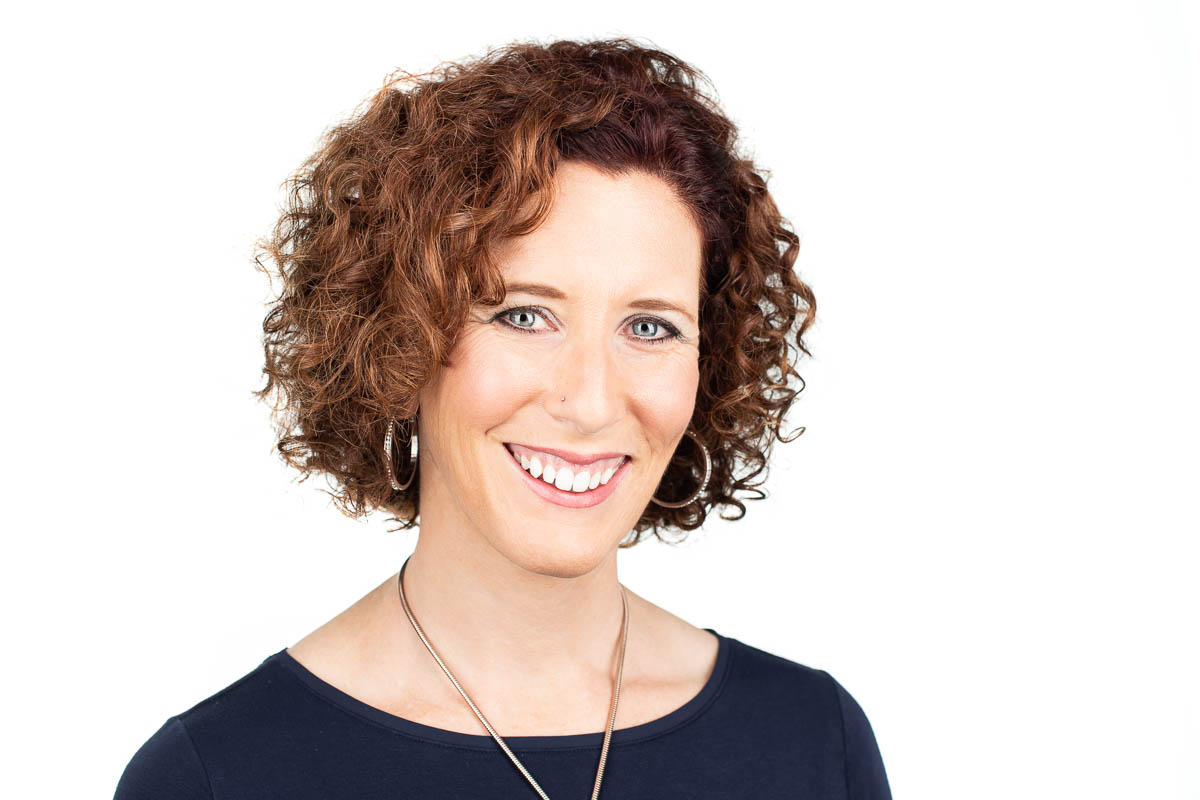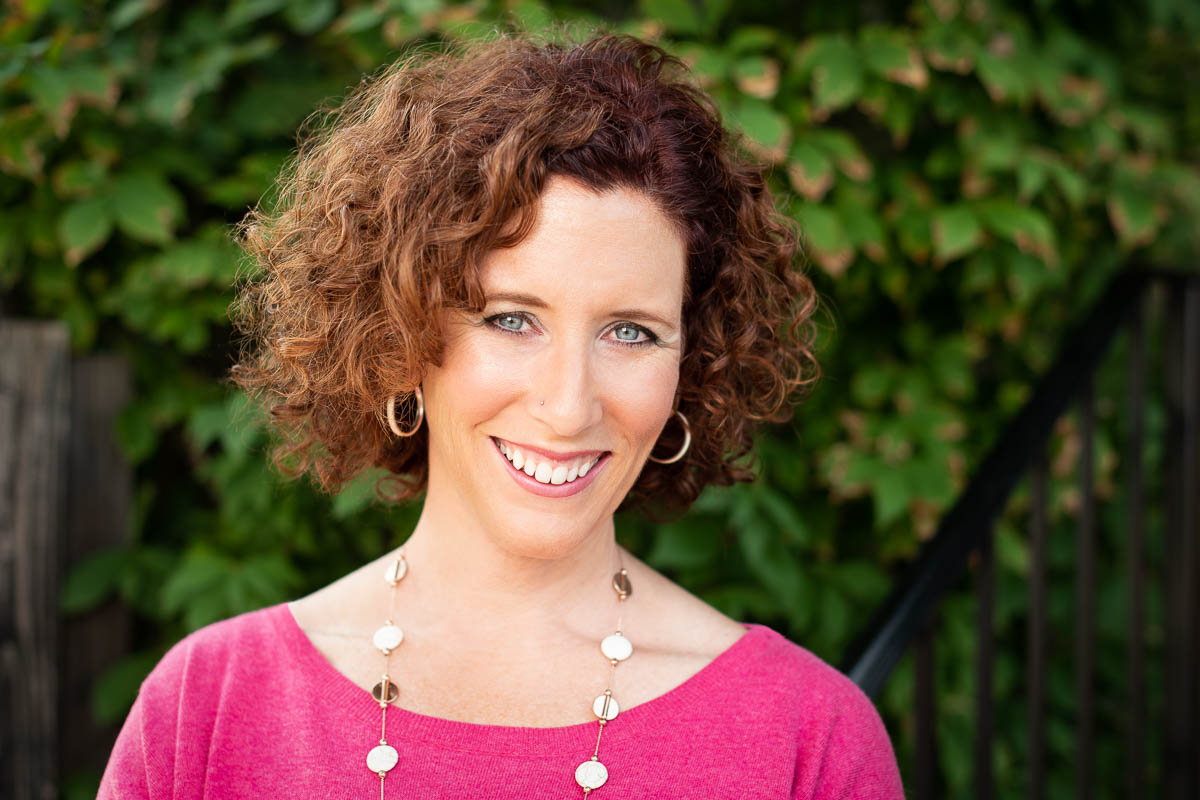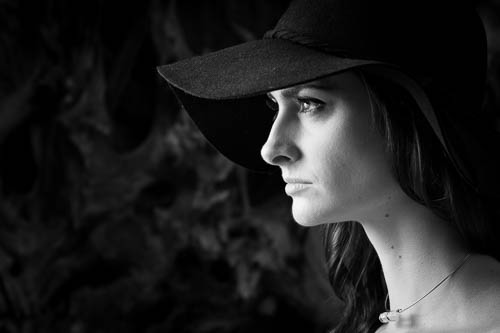What's the Difference Between a Headshot and a Portrait?
The terms professional headshot and portrait are often used interchangeably. While these types of photos do have some overlap, there are differences. Knowing these differences will help you better communicate to your photographer the type of look you need to promote yourself, your work, or your business. You might also want to check out my course, The Headshot Maximizer to help you prepare for a headshot session.
Headshot or portrait? What do you think?
In simplest terms, a professional headshot is a type of portrait. A headshot is a tightly cropped photo of the face, from the shoulders up. The subject is camera aware — typically looking right in the lens.
Years ago, headshots were reserved for actors and models. For talent, these images are in some ways more important than a resume. A casting director can scour through hundreds of photos in search of the perfect face for the role at hand.
In today’s socially connected world, a modern headshot comes in handy for anyone looking to market themselves professionally (or personally — don’t forget about online dating profiles).
If you don’t have a professional image of yourself (or the staff in your organization), then I always recommend starting with a headshot.
A portrait is a much broader term — essentially any image where the subject is aware she’s being photographed (even if she’s not looking at the camera). Depending on the specifics, you might be able to use a portrait where a headshot really makes the most sense. But because there are few rules when it comes to portraits, working in the context of a headshot is much simpler as you discuss possibilities with your photographer.
Lighting
Lighting in a headshot is usually broad — think soft even light. The entire face is lit. Contemporary portrait light can range from that same even light to a super dramatic edgy setup.
Just a sliver of light might illuminate the face in dramatic portrait or editorial shot. As cool as that might look, it’s not where you want to start for a headshot (even an actor’s headshot).
Note the highlight on the right side of the frame — a classic kicker light.
You may notice some edge or rim lighting in either case (also referred to as a kicker light). This is the light that skims the side of the face or body. It helps to separate the subject from the background and is the mark of a more sophisticated light setup. Is it any better? Not necessarily; it’s just a little fancier. Because rim lighting is typically customized to the individual, you’ll be less likely to see this type of lighting in higher volume projects.
Lately, you might see colored light in a portrait. In this style, a gel, or colored plastic sheet are placed over the light. This can add another level of mood or artistry to the image. You might see this in a headshot, but it will likely be subtle.
Cropping
In a headshot, the face should fill most of the frame. Think LinkedIn or other social profiles. Your photo isn’t that large to begin with on these sites, so make the most use of the pixels you have. You want viewers to recognize you as quickly as possible. Distracting clothing just takes the emphasis off you.
A great vertical portrait, definitely not a headshot though.
Some first time headshot clients cringe at the idea of their face filling with the whole frame. But remember, in most cases, the image won’t be viewed much larger than a business card size (or smaller). Think LinkedIn or other social profiles — the avatar photo is small. Viewers won’t be blowing up your photo to inspect your skin imperfections, trust me.
When it comes to portraits and cropping...you guessed it. Throw the rules out the window. Photographers can and do place the subject anywhere in the frame in portraits.
One functional tip for any ad or web layout: If you use a photo of the subject looking or facing one direction, pick an option with the subject looking into the frame, not off the page. The exception is if you’re trying to create tension.
Posing
While it’s just head and shoulders, there’s still quite of bit of posing in a headshot. An inch or two of movement in any direction is huge. Good posing can hide or reduce a double chin. It can mean the difference between a standoffish feel or a warm approachable look.
Portrait posing is all over the place and can even be intentionally awkward — especially in fashion or editorial looks. The pose will underscore the feel of the entire image, so attention must be given to the posing. As it relates to corporate or professional images, here are some tips.
Non-models will generally look uncomfortable unless posed. So if you need some images of staff standing at a distance from the camera, posing is essential.
A little asymmetry looks more natural. For example, one hand in a pocket or holding a small prop like a phone goes a long way in making an image appear organic.
Looking at the camera creates a human connection with the viewer. Notice that clothing or jewelry ads often have models looking off camera. This allows you to picture yourself with the products.
If you haven’t already noticed, posing your hands can be especially tricky. Here’s a dedicated video and post on the topic.
Background
Since headshots are more functional compared to a portrait in a marketing sense. A super simple background is key to a polished headshot.
My go-to options are white or a soft grey. If the viewer is distracted by the background for even a second, it’s working against you.
The other handy feature about a seamless background is that it can be easily extended (or cropped) without any major photoshop work. If you’ve ever tried to put a photo into a social media header, you know that every platform uses different proportions. And it seems like they change every couple of weeks too.


Going with a white background is also handy when it comes to integrating your branding colors. White goes with everything. Grey is a pretty safe bet too.
If you step outside for your headshot to get an organic background, be aware of the colors. Soft, out of focus trees are great, but this setup requires a little more attention to the background details. A beam of light that sneaks through the trees is the kind of thing that can wreck a good photo (our eyes are drawn to the brightest areas of an image).
When it comes to portraits, surprise surprise, anything goes for background. Aside from the neon blue streaks in a yearbook photo, you can pretty much get away with anything. Just be aware, the same guidelines apply. Your eye will be drawn to bright areas or distracting objects in the frame. If the background is essential to the feel or mood of the shot, this is great and marks a thoughtfully composed photo. The trees or light poles emerging from heads in the photos (called mergers) have the opposite effect.
Retouching
In keeping with the functional nature of a headshot, retouching covers the basics, including skin blemishes, stray hair, and facial lines, and it will brighten eyes and whiten teeth. I tell clients they’ll look like they got the best night's sleep in years.
There’s nothing wrong with a little slimming special sauce either. But that’s about it. Going overboard is a bad idea.
Time marches on and as much as we’d like, the clock shouldn’t be turned back for a headshot. You want viewers to see an honest representation of you, today. Let go of the old headshot you’re clinging to from years ago. Think of excessive retouching as wiping away years of professional experience. I bet your ideal client or employer is seeking you out because of your experience.
Styles and trends can change quickly in portrait photography. For some photographers, the editing or Photoshop work is a big part of what defines their look. Just know that anything overly trendy will appear very dated in a few years — especially in the context of professional image. If your portrait is more of a keepsake with a timeless intent, then keep the retouching simple. If you consider an image entirely artistic or creative in nature, then the rules are much more flexible.
Printing
Why print a headshot? It’s just for work, right? While you may prefer to have a framed family photo on your desk, your kids, parents or spouse would love a photo of you on their desk.
I get requests all the time from spouses of clients. A print makes a great gift for a grandchild. Okay, maybe throw in an Amazon gift card too. But there will come a day when the value of that print far exceeds any gift card you could give them.
Not too long ago, I got a call from the family of past headshot client. The client had passed away suddenly and his headshot was the last profesional photo that existed. It was an honor to provide the family whatever prints they needed for the memorial.
Some say it’s not a photograph until it’s in print. People are photographed now more than ever before. We all carry around thousands of photos in our phones. But what’s the last photo you printed? Backup and cloud technology is getting better and better. But viewing a portrait print requires no more technology than a light bulb. After an emergency or disaster, there are no passwords to guess. Archival professional prints will last a generation or more.
Detroit Portrait Studio
Thanks for sticking with me to the end! Hopefully I’ve answered some lingering questions as you begin the process of hiring a photographer. Check out my Headshot Maximizer course, for a series of videos on these topics and more.
I also hope that you’re able to scroll back up through the images in the post and understand the pros and cons of each shot in a given context.
Check out my Headshot FAQ for more posts on all things headshot photography.
If you’re in the Detroit area, I’d love to see you for a session! Hit the button below to learn about individual packages and book a session at my Troy, MI studio.
If you’re upgrading from a selfie as your professional image, then definitely start with a headshot. Beyond that, consider a photography sessions to meet your professional and personal needs.
If you have more questions, or would like to discuss a session for yourself or organization, let’s chat! If you found this post helpful, please share it on your social platform of choice.





